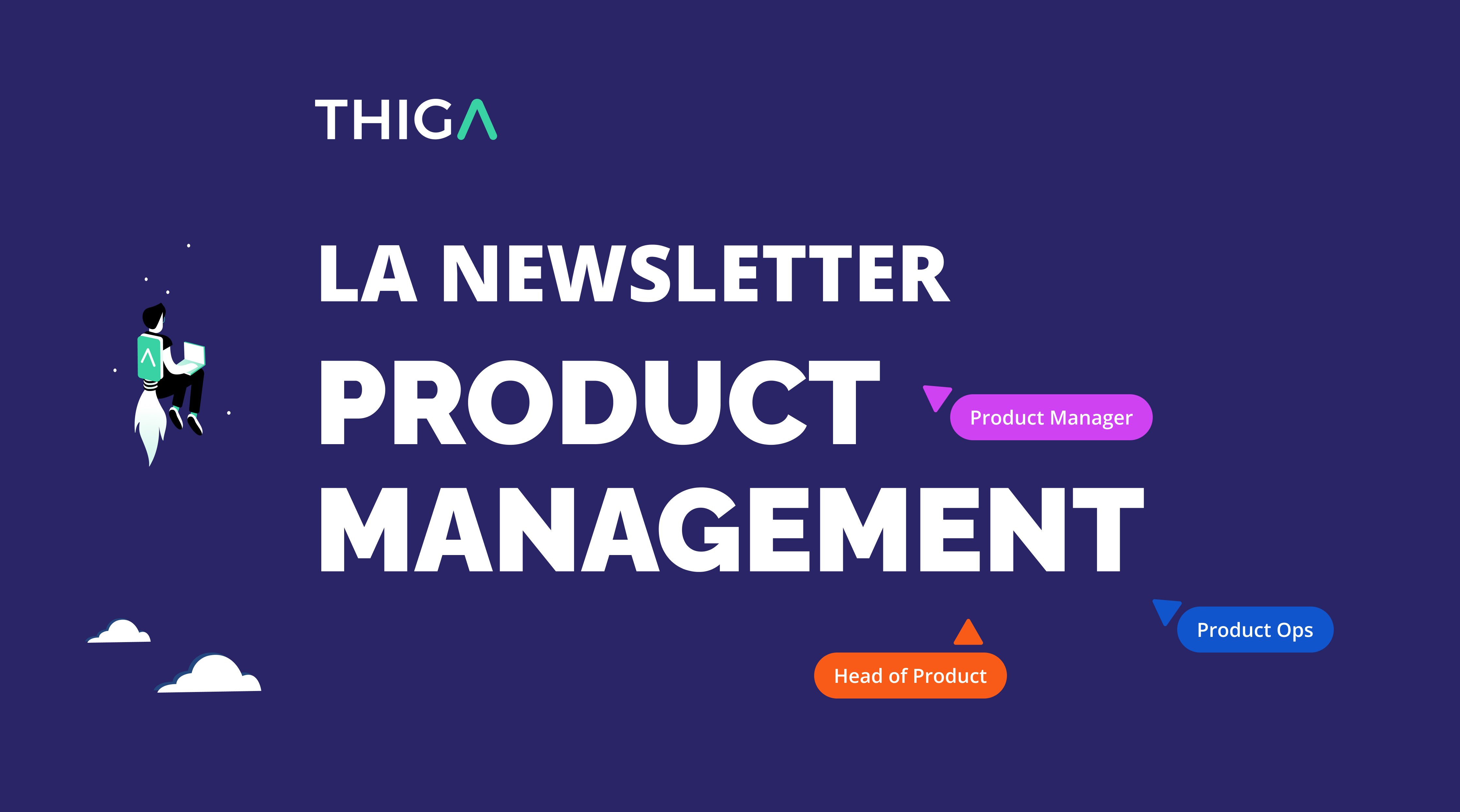Since this article was first published, the influx of new talent into the world of Product Management has shaken up organizations.
In a tense market, managers and HR staff all want to offer these candidates a working environment that will enable them to grow. Therefore, they constantly face the same questions: who to recruit? For what position? At what salary? What career paths can we offer our Product Managers and Designers?
That's why, while we've kept the essence of the article, we've extensively updated it and our Product Career Framework to better answer these questions, as well as those of current and future PMs. Happy reading!
The Product Management career framework by Thiga
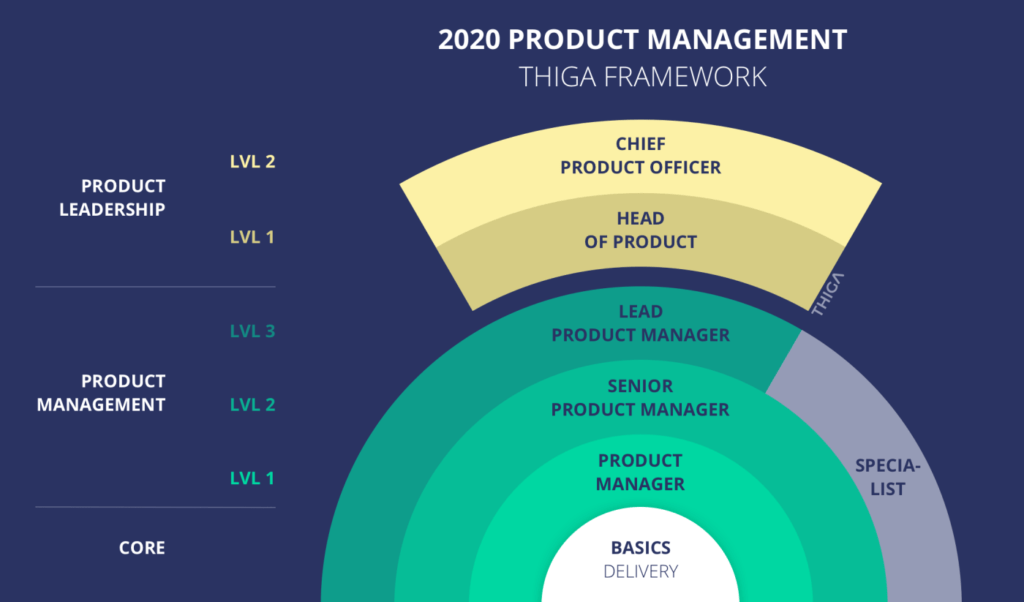 The Product Management career framework, from Product Manager to CPO
The Product Management career framework, from Product Manager to CPOProduct Manager, assess your skills and evolve!
Today, more and more candidates are choosing the Product path when leaving school or as part of a retraining program. But, because it was born of chance, our discipline suffers from a lack of structure, when compared to those of our fellow developers or marketers.
And it's always the same litany: what do these professions actually entail? How do I get started? Is there a specific training course required? How do I progress in these roles? Should I specialize or remain a generalist? Is it possible to grow without becoming a manager? What if I want to become a CPO?
This article can't answer everything, but we wanted to share the framework we've developed at Thiga to build our Thiga Academy training courses and advise candidates and companies on their different career plans.
MBut before we delve into careers, let's first break down the 9 areas of expertise in Product Management. Then we'll look at the 3 possible career paths: Generalist, Specialist and Manager.
Disclaimer: I still have no shares in M&Ms.
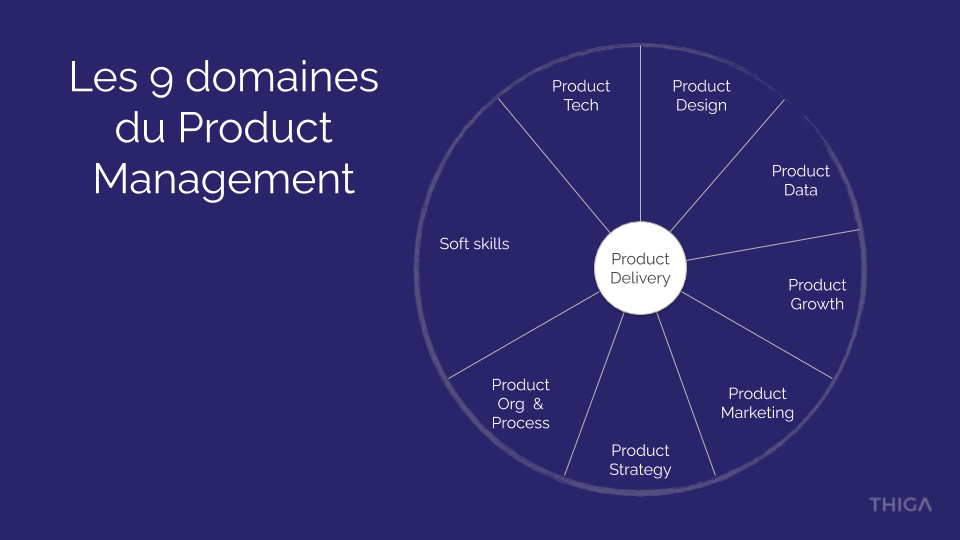
Delivery: The peanut, the core of the M&M
In France, the Product Owner is sometimes mistakenly seen as a technical or functional project manager. However, this legacy of the MOE / MOA world is contrary to the very spirit of Product Management. "Product Owner" is not a job: it's a role within a team.
If Product Management were an M&M, delivery would be the peanut, the heart. "PO" is one of the Product Manager's hats, without which a PM cannot really be considered a PM. Without Product Ownership, there's no delivery and no product: PM = PO
A PM who isn’t a PO would be a Smarties. Why? Because a Product organization requires autonomy and responsibility. So, it's essential that the one who THINKS should also be the one who DOES, in order to be able to decide, adapt and be "accountable". To live with your decisions, is to be responsible for them.
To find out more: discover our book on The Keys to Product Management
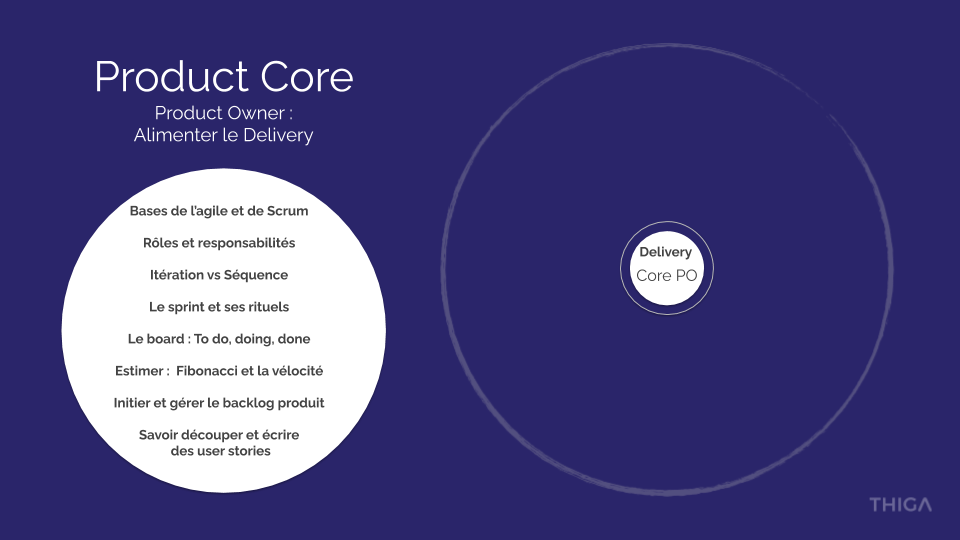
What if you had the title of Product Manager but you weren’t in charge of delivery? Well, that's okay, we like Smarties anyway! In reality, it's a simple question of naming. You're probably either a Product Specialist or a Manager. (We'll look at these different positions later in the article).
Of course, you can ask to change your title if you wish. But then again, it's just a title, right?
On the other hand, certain products are confined to the role (and title) of Product Owner. They're stuck in a "by the book" Scrum methodology, asked to feed stories to the devs, but above all, not to challenge the needs. They work solely with the development team. In this case, it's a misunderstanding of the Product role, or an organization that still separates reflection and action, or "Business" and "IT" - in short, it's a symptom of an organization that is not a Product organization.
The other domains: 8 shades of chocolate
Around the Delivery peanut, a Product can develop 8 chocolate flavors:
- Product design: making the user journey useful, usable and engaging;
- Product data: being data-informed, i.e. knowing how to use quantitative data to make a better product;
- Product growth: inspire and accelerate user engagement throughout the user journey;
- Product marketing: develop awareness of the product and its features/benefits;
- Product strategy (including Discovery): discover the right and wrong formulas in the problem/product/market equation;
- Product organisation: building an environment that enables products and teams to emerge and grow to their best ability;
- Product tech: understanding the technical challenges and mastering the particularities of very "techy" products (APIs, Data Science...), without coding;
- Product soft skills: developing and spreading the product mindset.
From Product Manager to Chief Product Officer: Career and skill development
In the rest of this article, we'll take a look at the different Product Management professions, explaining the roles and skills required at each level. Let's start with the Product Manager - level 1!
Product Manager - Level 1: Making the right product
PM role - Level 1
The minimum requirement for a Product Manager (Level 1 of Product Management) is to be "full stack": to develop a solid foundation in all 8 areas. In addition to delivery, they discover and understand the right problem, envisage and test solutions, consider the value proposition, tend to the journey in terms of usage and ROI for both users and the business, and collaborate effectively with those who are going to help throughout the process.
PM skills - Level 1
So, do you have to start by being a Product Owner, i.e. ensuring Delivery, before adding chocolate to become a Product Manager? No. In my opinion, the best way to become a Product Manager is to start out as an APM (Associate Product Manager). Basically, you learn the job by shadowing one or more Product Managers, before taking responsibility from A to Z for an evolution (under supervision) and gaining autonomy. To use an image dear to Product Ownership when it comes to User Stories: the advantage of being an APM is that you can quickly take on the responsibility of the entire value chain (slice of the cake), and not just the delivery "layer" (one layer of the cake).
PM salary - Level 1
A Product Manager's salary obviously depends on the number of years’ experience. There is a relatively wide range between a graduate and a more experienced PM. According to La Product Conf's latest annual barometer, a Level 1 Product Manager earns an average of €46,000 gross per year (for the global range, click here).
To find out all you need to know on how to create a successful product, sign up for our Product Manager training course.
To find out all you need to know on how to create a successful product, sign up for our Product Manager training course
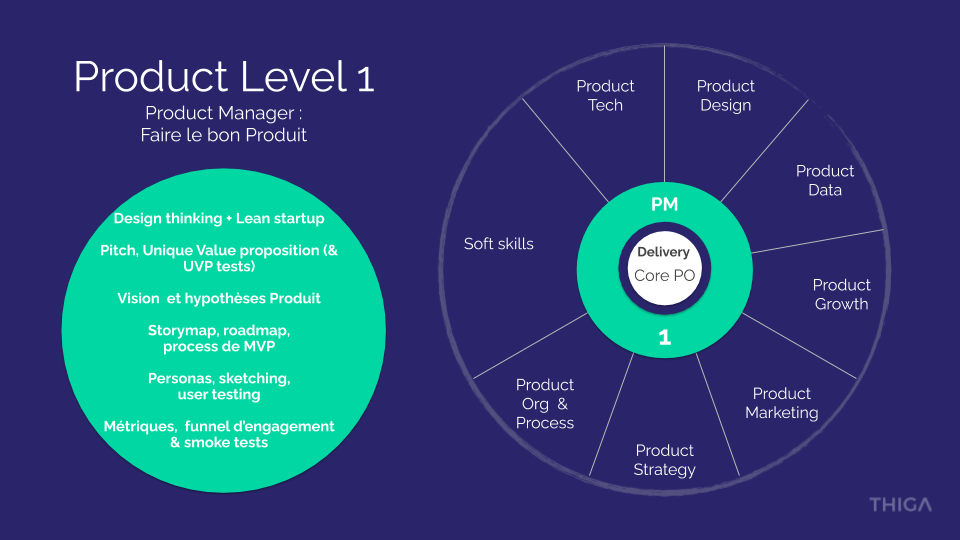
Confirmed Product Manager - Level 1: Linking Discovery, Delivery and Optimization
Advanced PM role - Level 1
Once you've acquired the basics, it's through practice that the Product Manager will assert themselves in their role. After 18 months to 2 years' experience, they'll want to have their say on the roadmap.
Advanced PM skills - Level 1
For that, they’ll have to learn:
- Know when to optimize the existing vs. continuously building something new (next feature fallacy).
- Generate insights, by initiating Product Research: cross-check market and user information and data.
- Based on these insights, convince the team, their manager and stakeholders that the problem they want to solve is worth investing resources in.
- Organize to match discovery and delivery.
- Cope with uncertainty that will disrupt the use of team resources.
A good and Advanced PM will then be able to choose which of their skill areas to strengthen in order to continue their career.
To excel in Product Discovery: sign up for our Discovery Discipline training course.
Senior Product Manager - Level 2: Strengthening Product Management skills
You'll probably have noticed that the 8 areas of Product Management correspond to Product variations of existing professions. Why is that?
It is because the Product Manager is like a Top Chef contestant: a jack-of-all-trades. If the job is to know a bit of everything, it's not to know everything. No Product Manager masters all 9 domains, because that's impossible.
Our job is to know enough of everything to be able to talk to everyone and make informed decisions by mixing flavors. Experience will give each profile its own "shade", and then surround themselves with complementary profiles. So, let's stop with these myths. You don't "need" to be an engineer, to have been a marketer, or to know how to code, to be a Product Manager. It's from diversity that the strength of a Product is born.
And above all, there's only one "golden ticket" to the Product: the mindset. You don't learn how to listen and when to ask the right questions in school - in fact, it’s quite the opposite. So, it doesn't matter what your initial training you’ve done: you’ll learn the skill set later, not the mindset.
So, while no Product Manager masters all 9 areas, every Product Manager has different backgrounds and preferences. Throughout their experience, they will develop specific skills in one or more of the 9 areas, and become a Senior Product Manager.
It's worth noting that just because you've mastered the basics of Delivery doesn't mean you delve into this skill - on the contrary. You can caramelize your peanut: because mastering advanced Delivery which means allowing more time for other Product activities, including Discovery.
Don't wait any longer, test your skills with our Evolve framework!
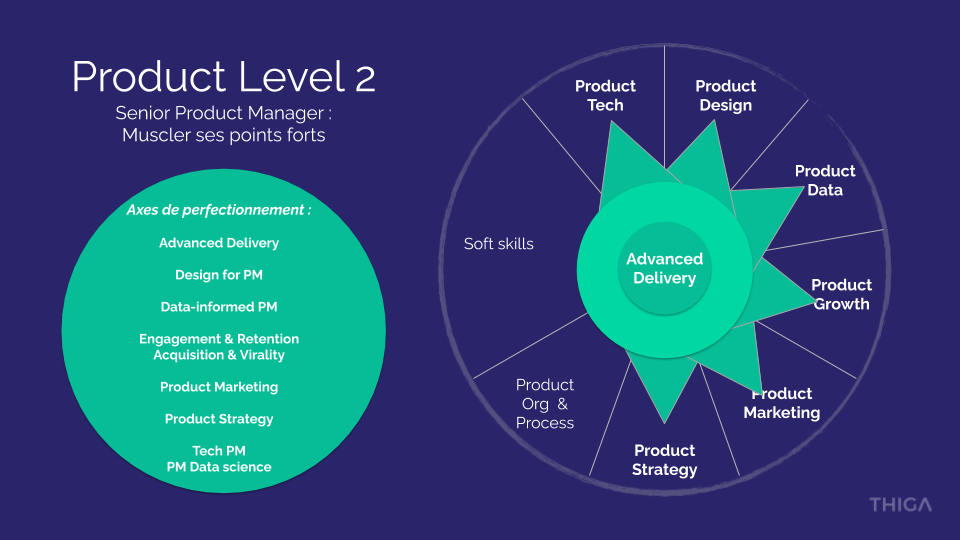
Lead Product Manager - Level 3: Being a leader without being a manager
Lead PM role - Level 3
Many Product Managers will remain Senior, and that's just as well. A company needs solid Senior PMs, who have experienced failures and successes on different products, and are able to cope with uncertainty. They are the pillars of the product organization.
However, some of these Seniors will evolve into a very special role: Lead Product Manager (sometimes called Principal Product Manager).
Lead PM skills - Level 3
Contrary to what you might think, a Lead PM is not intended to be a manager of PMs. They are a Product Manager :
- strong enough to be entrusted with a strategic functional area, on which they ensure Delivery;
- diplomatic enough to help their manager make strategic decisions;
- pedagogical enough to support other PMs on the team and mentor junior PMs.
What sets them apart is that they have become experts in decision-making. They will be expected to stand back and organize all product activities - discovery, delivery, optimization - and all areas necessary for success - tech, but also design, data, growth…
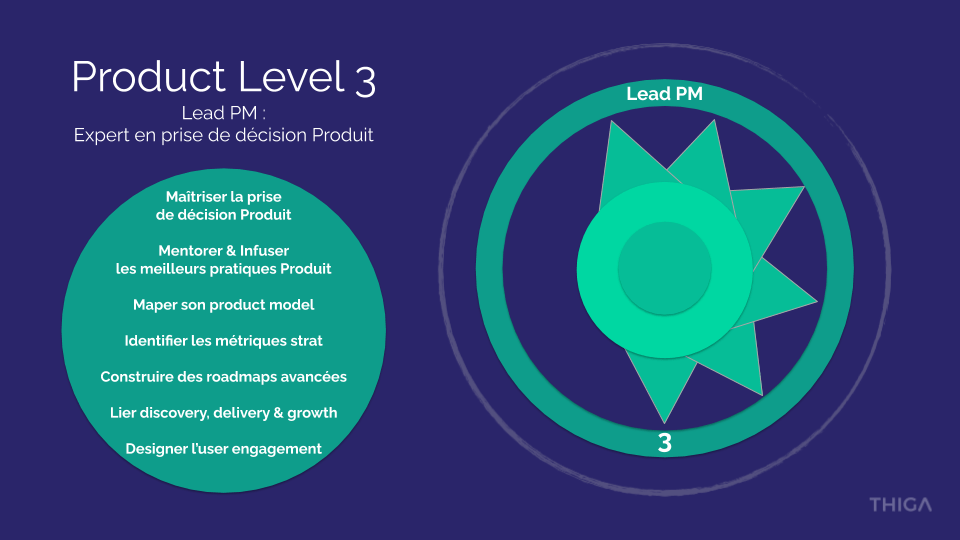
In reality, in France, the Lead role is often performed by the Head of Product. But the more profiles there are in Product teams, the more the Lead PM will become a position in its own right.
And some Leads are in fact Heads of (see below). Once again, the important thing is the responsibility, not the title!
Product Specialist - Level 3: Dark, milk or white chocolate?
Perhaps you love one of these domains so much that you'd like to devote all your time to it? Well, it's possible - by becoming a Product Specialist!
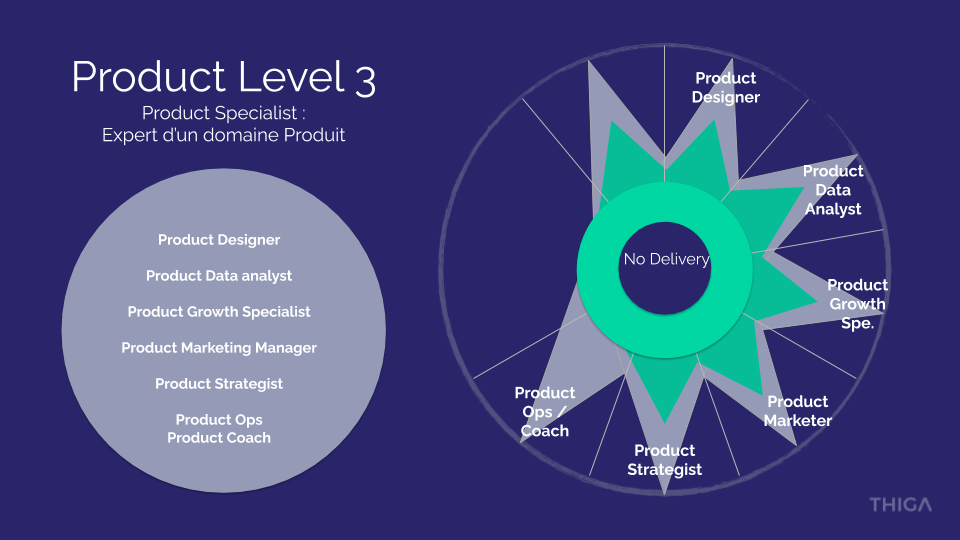
A Product Specialist is no longer responsible for Delivery. As a cross-functional role, they become the point of reference for their field within the product organization: they are there to help the Product Managers. And each domain has its own specialists:
- Product Ops who will help Product Managers become more efficient by creating the right environment, managing the different methods and tools; providing data; and ensuring communication between internal and external players within and around the Product;
- Product Marketing Manager who is responsible for Customer Research, defining the right messages and ensuring that they are delivered to the right audience at the right time, directly, via Sales or via Partners;
- Product Strategist who is responsible for Product Research (market, users and data) in order to provide insights to the CPO and Product Managers (macro-optimization);
- Product Data Analyst who will help Product Managers integrate the data-informed dimension before (discovery), during (tagging) and after (measurement) delivery;
- Product Growth Specialist who will carry out micro-optimization tests on different parts of the customer journey, from acquisition to anti-churn;
- Or the User Researcher or Product Coach..
As for the Product Designer, they’re a very particular type of specialist, to the point that we have a dedicated skills and career framework, based on the same model as that of Product Management:
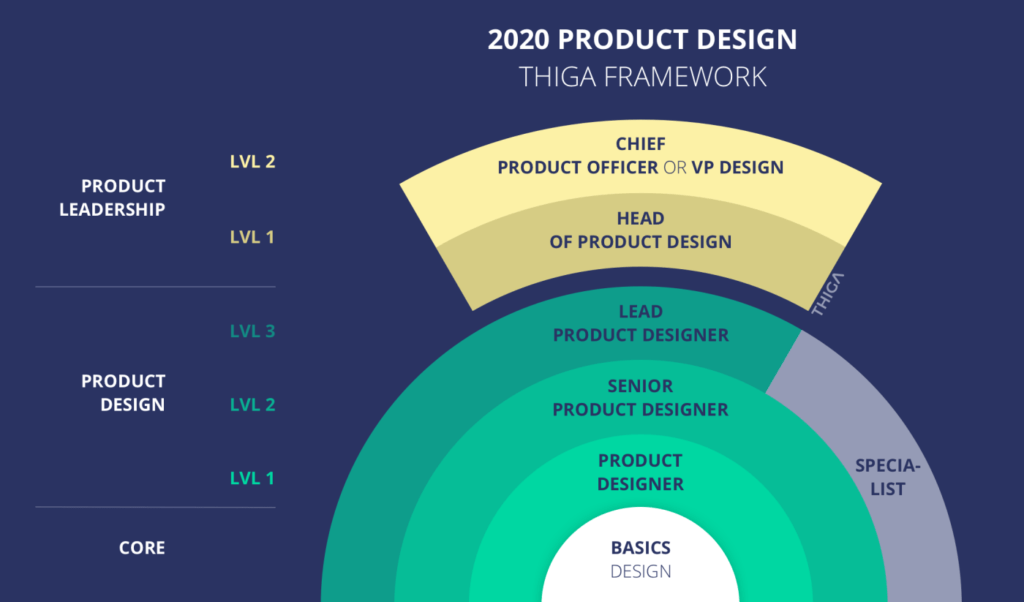
Head of Product - Product Leader 1: Operational manager of product profiles
Head of Product role - Product leader 1
How could I finish an article on careers without mentioning management? (Besides, management positions deserve their own article, don't you think? I promise, I'll get to it soon). Surprisingly, in some people's minds, becoming a manager seems to be the only way to evolve. If you're not a CPO by the age of 40, have you failed?
Being a Product Manager and being manager of Product Manager profiles are two very different jobs! Being Head of or CPO is no longer about being a M&M's: it's about being a Snickers bar, the link between M&M's. (Are you hungry too?).
Not everyone is cut out for the job, and few people really thrive in the role of operational manager:
- Taking the risk of upsetting the team, and getting it wrong, every time you recruit;
- Asking the right questions, resist giving the right answers (let the person solve the riddle, without biasing or being authoritarian);
- Letting managers make their own mistakes, without interfering:
- Plot a career path for each person, and do whatever it takes to guide them towards success, even if this means providing critical guidance or managing illusions of competence or susceptibility:
- Implement and ensure the execution of the strategy, even if you're not convinced it's the right one;
- Giving good news and bad news;
- Seeing your team leave for other horizons, and sometimes being the one to show them the door.
Head of Product skills - Product leader 1
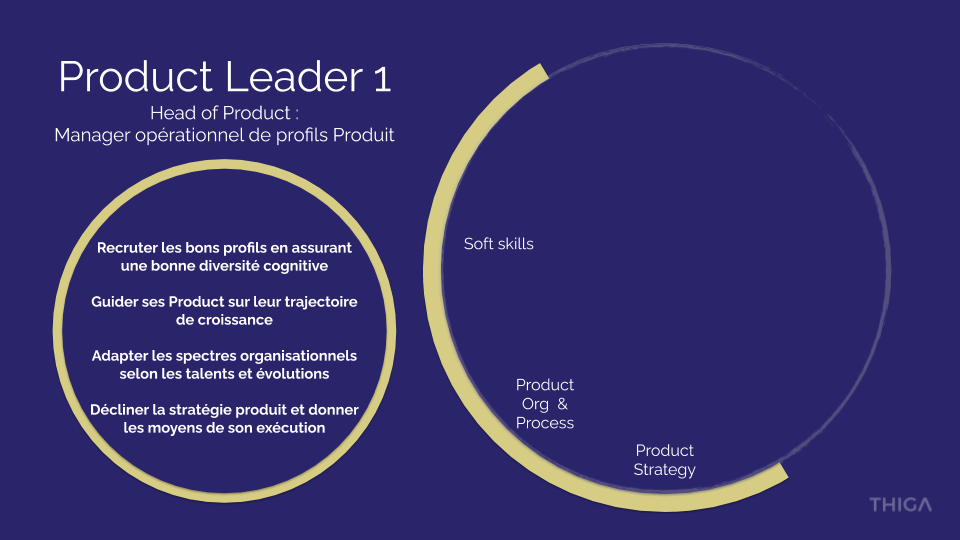
Being a manager therefore requires self-sacrifice, as it's no longer a question of building the product, but rather the environment that enables the Product to flourish. It should be noted that, depending on the organization, the Head of Product may manage all or some of the Product profiles: Product managers only, but also Product Design, Product Data, Product Growth...
What if I'm manager AND Product Manager of a Product team? Then you're talking about a Group PM, a hybrid profile. The advantage of this position is that you're not cut off from reality in the field; the difficulty is having the time to do both your job as manager and your job as PM. In many cases, this is a transitional situation, when the product and tech teams are growing.
Chief Product Officer - Product Leader 2: The voice of the product at CoMex and on the board
Finally, the role of Chief Product Officer, distinct from that of Head of, emerges when the company reaches a size too large for the two positions to merge.
Designated as chief of the Product organization, their role is strategic: they must ensure the alignment and autonomy of all Product teams. And to do this, they have 4 levers of action at their disposal:esigner en chef de l'organisation Produit, son rôle est stratégique : il doit assurer l'alignement et l'autonomie de l'ensemble des équipes Produit. Et pour cela, il dispose de 4 leviers d'action :
- the adaptation and evolution of the Product culture within the corporate culture;
- the rules of organizational design for product teams, from the composition and size of teams, to the processes that govern their operation and the autonomy given to teams to adapt them;
- product strategy (and not just the sacred "vision", which is only one component) and the allocation of resources (people, tools, but also skill development) to ensure performance;
- commitment at product profile level.
In short, they are the Product Manager of the Product Organization.
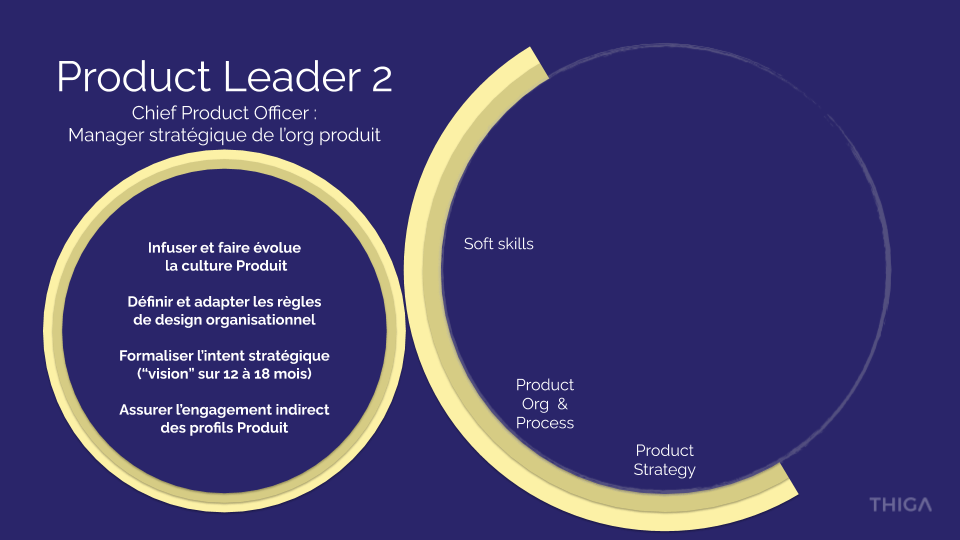
What about the Product Director or VP?
Well, it depends. In principle, the VP Product is between the CPO and the Head of. But sometimes, they also take the role of CPO and are present at CoMex.
As for the Product Director, this title is used differently depending on the structure:
- sometimes between Product Manager and Head of;
- sometimes between Head of and CPO / VP;
- sometimes a Product Manager, but also a Director, which is a pretty big deal on Linkedin.
My advice? Weigh up the pros and cons carefully. If it's clear internally, and there's no problem using a different title on LinkedIn, it may not be worth changing everyone's title. It's up to you!
Conclusion: Combine flavors
In conclusion, the Product is a business of opportunities, and the career of a PM is rarely straightforward. So you can either:
- remain a Senior PM for the rest of your career, because you enjoy "getting your hands dirty" (and have enough meetings as it is);
- develop expertise later in life;
- become a manager after specializing;
- or even, change careers!
So, how do you know what the right career path is for you or the products you manage? Well, by using the 2nd draft of our framework (for free), in:
- avoiding over-cutting: jobs must have meaning and represent an accomplishment;
- avoiding dogmatism: not everyone can be at the same level in all skills;
- adapting to the company's structure, size and terms, avoiding as much as possible the creation of silos.
And to go one step further, our goal at Thiga is to be able to help you even more by sharing our detailed skills framework with the community:
- so that a PM can know where they stand and the possible career paths to boost their career;
- so that a manager can put together a team of complementary profiles and develop it further;
- to make it easier for recruiters to assess candidates' skills, thanks to a company-wide common frame of reference.
Product Manager, assess your skills and evolve!

